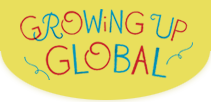(Note: This piece was originally published on Edutopia here)
During the first Earth Day in 1970, tens of thousands of Vietnam War protestors took to Central Park in New York and Fairmount Park in Philadelphia calling for peace on earth. Today, the movement has grown substantially and quietly, shifting attention toward the science documenting alarming global environmental degradation and offering young learners a platform for supporting the planet’s physical health, ensuring a home for their future.
By definition, Earth Day is a global learning day. Earth, water, air quality, climate, chemistry, physics, physiology, plant life and animal habitats don’t respect national boundaries, so they are inherently global in nature, inviting wider exploration and conversation. This fact in itself can serve as a launch for a global conversation. Vexing challenges that stump the best scientific minds are solved globally using collaborative teams located in different locales that experiment and study issues from diverse angles and approaches. The lives of environmental pioneers like Wangari Maathai can inspire learning throughout the curriculum.
Go ahead and wear flowers in your hair for Earth Day. Then, to engage in deeper learning, try some of these terrific resources.
Bucket Buddies
The Bucket Buddies Project calls for students around the world to collect water samples from local ponds to answer the question: “Are the organisms found in pond water the same all over the world?” The lesson plans allow students to identify microinvertebrates in their water sample, share their findings on the web site, and analyze the data.
GLOBE
The Global Learning and Observations to Benefit the Environment (GLOBE) program is NASA’s hands-on science program that allows classrooms to connect with scientists and science students from around the world. Schools can join their Student Climate Research Campaign and connect with classrooms near and far. While conducting science investigations and sharing their climate science studies, students will be inspired to look at climate-related environmental issues and Earth as a system.
ProjectExplorer and STEM Learning
ProjectExplorer‘s library of two-to-four-minute videos was created to introduce students to the features that make diverse cultures and countries so fascinating. Start at the homepage by choosing your learning level (e.g., Upper Elementary), pick a spot on the globe that has a project marker, and take off. For example, in the Mauritius series, learn how the island was formed, about the science and the ancient origins of the helicopter, how mineral deposits created gorgeous multi-colored sand found only on that island, how fish breathe, and more. Supplement your “travels” in this series by tapping into National Geographic’s new Geo-Educator Community.
The Daffodil and Tulip Project
The Daffodil and Tulip Project was started by iEARN, which works to connect schools and teachers across the planet, and has a bank of great collaborative project ideas. This project offers a science/math/writing/friendship experience that can be as simple or as complicated as a classroom is ready to take on. Classrooms around the world choose daffodil and/or tulip bulbs to plant during the same week in November. Students collect temperature data throughout the experiment, including when blooms appear, and report their results — both to their classmates and to their partner classes in other locales. For Earth Day, you can compare the bulbs in your community to postings made by ongoing project participants.
This project’s description page shows participation from Jamaica, Israel, Iran and the United States. iEARN reports:
Participants enjoy interacting together while “waiting” for the blooms. Students have opportunities to use math skills, such as graphing, converting metric to English or the reverse, temperature conversions F to C and the reverse. In addition, they strengthen and practice science skills, i.e. hypothesizing what effects bloom date, collecting data, comparing and analyzing data. Also, students learn the importance of establishing and following a scientific protocol. The ultimate goal of the project is to promote building connections between students and their teachers, considering what affects plant growth, and peace!
Incorporate Global Lessons
Challenge yourself to turn any elementary science unit you’re studying into a vehicle for learning more about the wider world. For example, while teaching the water cycle and water conservation, see Teach UNICEF, Water.org or the Peace Corps’ Passport blog for lesson plans.
Each of these examples offers one big lesson: start with a topic you love, and see where it might lead you. As the founders of Earth Day had hoped, it could even plant the seeds to peace.


